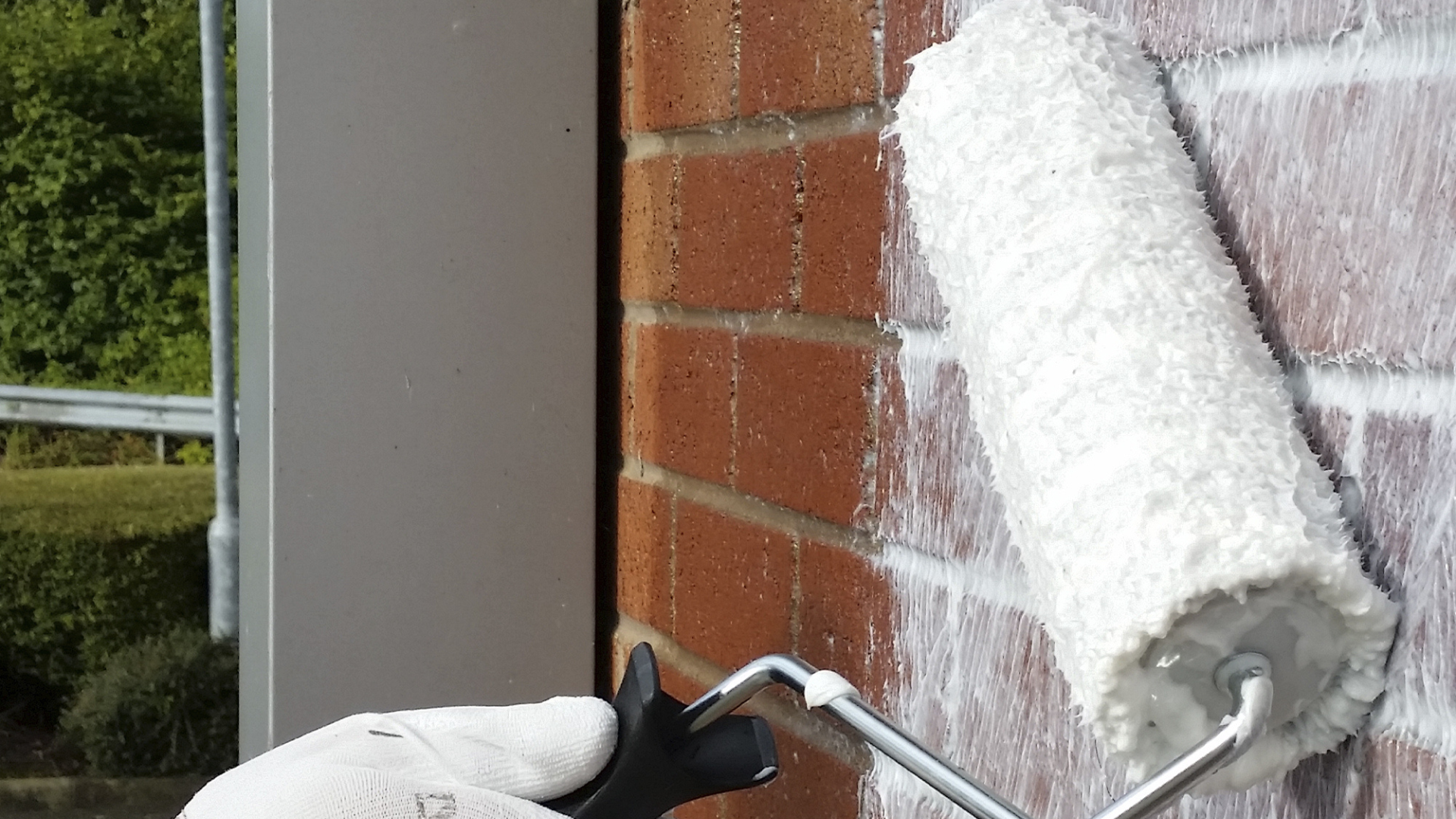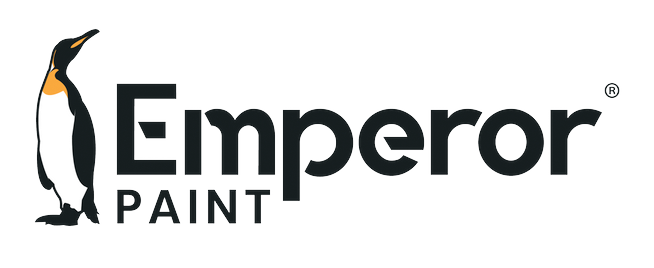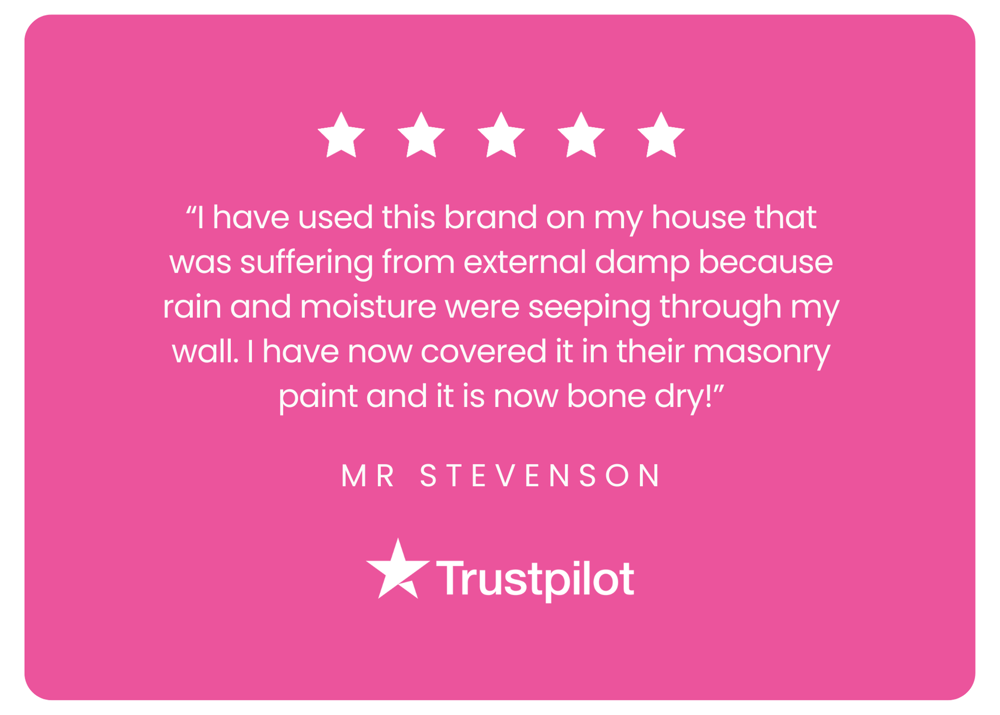
What Is Penetrating Damp?
Damp is an all to common occurrence in households across the UK, and is something we are all very aware of. What we are less aware of is that there are a number of forms of damp, with the two most common forms of damp being penetrating damp & rising damp.
Rising damp is a less prominent form of damp that occurs when moisture from ground level travels up through the exterior walls of a property, leaving large damp patches that rise up the wall. This is caused by a failed or non-existent damp proof course (DPC) or when the DPC has been bridged by moisture. Rising damp can be difficult to spot, but a tell-tale sign of rising damp is that the damp occurrence from the ground up.
In contrast to this, penetrating damp is caused by the intrusion of moisture through an exterior wall of a property. Unlike rising damp, penetrating damp can occur at any level of the building, either forming in isolated areas across the structure or on full exterior walls. This moisture is absorbed by exterior walls as building materials, contrary to popular belief, are not waterproof. They are porous, meaning they absorb water, which in the UK is a common occurrence unfortunately.
Properties with a solid wall construction are particularly at risk due to the lack of a cavity between the exterior and interior walls. This cavity acts as a barrier between the exterior and interior structure, reducing the ability for saturated compounds to transfer moisture. Without a barrier, solid wall structures allow moisture to pass freely into your home, resulting in large scale damp. While solid wall construction buildings are particularly prone, buildings with cavity walls are also at risk from penetrating damp. This is because wall cavities can become blocked by debris, which completely defeats the purpose of the cavity which aims to create a gap that does not allow moisture to transfer from the exterior wall to the interior wall. This debris creates a bridge for moisture to travel to the inside of the property. This is also the case when cavity walls are fitted with insulation, once again providing a bridge for moisture.
Common areas that are affected by penetrating damp include roofs, windows, gutters & areas of the external walls that show signs of cracking. It is crucial to regularly check prone areas for water ingress as these areas can quickly deteriorate.
What Is The Impact Of Penetrating Damp?
Penetrating damp, like with all damp problems, can become increasingly damaging if the root cause of the problem is not dealt with.
Leaving a property untreated and at risk from penetrating damp can result in a wide variety of issues. It can cause significant damage to the property's integrity, including weakening the strength of the masonry, reducing the insulation of the structure, damaging plasterwork and leaving a musty smell in your home.
Not only this, but the spread of damp within the interior surfaces can lead to respiratory and other health related issues. While these health problems are often limited, long-term exposure to damp can be damaging to health. This is especially the case if black mould is present.
This is a fungus that grows in damp conditions which is responsible for most damp related health problems. It can be identified by black specks on the interior walls and if left untreated can accentuate respiratory problems such as Asthma that can become chronic if left exposed to long-term.
This is another crucial reason why treating penetrating damp as soon as possible is paramount to the health of you and your home.
How To Identify Penetrating Damp
We are often asked 'how do I know if my house has penetrating damp problems?', to which the answer is relatively straight forward. There are a number of things that can indicate penetrating damp, that include:
- The presence of dark spots on the exterior wall of your property
- Salt efflorescence that takes the form of a white, powdery substance that is caused by water ingress
- Damage to exterior walls, including cracked bricks & crumbling mortar
- Water marks on interior walls that could cause paint or wallpaper to peel
- A musty smell

How To Prevent Penetrating Damp
Whether you already suffer from damp issues or want to protect your home from the potential of future damage, the solution is the same. Simply put, you must significantly reduce the moisture levels of a structure and limit the ability for moisture to penetrate the exterior walls of a property, then the risk of penetrating damp is significantly reduced.
The first and most important step preventing penetrating damp from occuring is by identifying and resolving source of moisture. Often penetrating damp is caused by three things:
Porous exterior bricks - while all exterior bricks are porous, over time they can become more susceptible to water ingress
Damaged brickwork - spalling bricks, or cracking brick faces, often caused by frost damage, or damaged mortar allow moisture to enter an exterior walls through cracks
A defect in building materials - poor guttering or a damaged roof can also cause moisture to be able to enter the building materials
Conducting an assessment of your property in order to identify what may be the route cause of the water ingress is the first step. Check any guttering for blocks and check the water tightness of your windows. If dark patches are appearing near gutters or windows, this could be an indication of a problem area. As part of the investigation, have a thorough look at the brickwork on your property, checking for any obvious sign of damage such as cracks or crumbling mortar. If this is the case then your brickwork needs help preventing the water ingress as it has become compromised.
There are a number of waterproofing solutions available to homeowners that can prevent water ingress and protect brickwork from further damage. Unfortunately, there is a large amount of confusion and misinformation regarding these waterproof treatments, especially in the UK. This comes from many products, known as 'sealers' being developed to waterproof exterior bricks. These sealers get their name as they create a waterproof seal on exterior bricks that prevents any moisture from entering the brick. However, while these products seal the outside of brickwork they also seal the inside, which prevents moisture from the internal structure escaping, which works in the complete opposite way to what they were designed to do and actually makes damp problems worse as the damp has nowhere to go.
This is because these brick sealers are not breathable, which is the measure of how water vapour can freely travel through a building material. By sealing the brickwork, it cannot freely breathe, which traps moisture. This means that any waterproof treatment for exterior walls must be highly breathable in order to be an effective treatment for penetrating damp.
One such technology that has been developed Emperor Paint is called super hydrophobic technology. This waterproof technology penetrates into the exterior wall by lining the pores of the material, rather than creating a waterproof film on the surface. This means that while water is repelled from the surface, water vapour can freely travel through the pores of the material, thus creating a one way passage for moisture to travel.

The super hydrophobic technology developed by Emperor Paint comes in two forms; a waterproof masonry paint and a masonry cream. While the masonry paint is a coloured paint, the masonry cream is an invisible waterproof treatment, which allows both painted and non painted properties the ability to prevent penetrating damp.

Both Emperor Masonry Paint and Emperor Masonry Creme have undertaken extensive testing in order to establish their effectiveness. UKAS accredited laboratory Lucideon were tasked with carrying out a 25-year weathering test on both penetrating damp treatments in order to see how they prevented accelerated heavy weathering. The results of the test showed that both treatments passed every test, as they not only prevented water ingress by 96% for the 25-year period, but they also were not affected in appearance by the weathering. The treatments were also found to have no impact on the breathability of the masonry, ensuring water vapour could freely escape the material.
The comprehensive results of the 25-year accelerated weathering process is why Emperor Paint products all come with a lifetime guarantee, as looked and performed exactly how they did when they were first applied, before being subjected to 25-years of accelerated harsh weathering.
What Is The Cost Of Treatment?
The cost of treating damp has been extremely high in the UK, especially when paying professionals to carry out damp surveys and then remedial works. This is why many damp proofing professionals and businesses will insist that you do not carry out any damp proofing yourself. The truth is that consulting a professional is advised in extensive causes of damp, or when the source of the damp is difficult to identify. It is estimated by Checkatrade that waterproofing exterior walls could cost on average £1,500.
If the root cause of the damp problems has been identified, then the cost of treating penetrating damp is significantly reduced by the DIY friendly solutions we have developed.
Emperor Masonry Creme & Emperor Masonry Paint can be purchased and applied by yourself for a fraction of the cost of hiring a building professional.

How Do You Apply The Penetrating Damp Treatments?
The application process of each treatment varies. The masonry cream is a one-coat treatment that can be applied using a paint brush or roller to either the full house or to a single area that is particularly prone to damp. As it is completely invisible, it will not alter the appearance of the brickwork or stone it is applied to, making it extremely DIY friendly.
The waterproof masonry paint is applied in the same way as any masonry paint, in a two-coat process. It can be applied to bare surfaces when a primer is applied before hand, or applied straight on to painted pre-painted exterior walls.
When using either treatment, simply ensure the surface is clean and free from any growth. An anti-fungal wash can be applied before painting that will kill any bacteria, preparing the surface perfectly to treat.
For full instructions on how to apply both Emperor Masonry Paint and Masonry Cream read our guide to waterproofing brick walls or visit our help & advice page.

Frequently Asked Questions
Q. WILL RENDERING STOP PENETRATNG DAMP?
A traditional sand render will not prevent penetrating damp, nor will it solve existing damp problems. Bare render will absorb moisture, just like bare brick, stone or cement. If you want to prevent penetrating damp, the best solution is to treat exterior walls using a water repellent and breathable treatment.
Q. DOES DAMP CAUSE HEALTH PROBLEMS?
As we have mentioned, according to the NHS, damp can cause a range of health problems, including respiratory infections, allergies or asthma. This is caused by mould spores, putting children, the elderly and those with pre-existing skin or respiratory problems the most at risk. Long-term exposure to damp is something that should be avoided at all costs.
Q. CAN YOU PAINT OVER PENETRATING DAMP?
When it comes to painting interior or exterior walls that are suffering from damp, it is crucial that you allow these to dry out before painting. Paint and moisture do not go well together, which will simply result in the paint failing. This means that you should wait till the spring and summer months when painting as this will give the wall a chance to dry out enough to paint.
Q. CAN YOU PAINT OVER A WATER SEAL?
An all-too-common question we receive is 'can you paint over the top of a water seal'? Any product that is designed to repel water cannot be painted onto, whether a clear water seal or a waterproof masonry paint.
When it comes to painting interior or exterior walls that are suffering from damp, it is crucial that you allow these to dry out before painting. Paint and moisture do not go well together, which will simply result in the paint failing. This means that you should wait till the spring and summer months when painting as this will give the wall a chance to dry out enough to paint.
We are often asked this in relation to our masonry cream, where homeowners would like to waterproof an exterior wall to prevent penetrating damp but would like to paint over this with a colour. Due to this, we developed our masonry paint, which contains the same super hydrophobic technology. The only difference between the two treatments is that the paint does not penetrate into the brick as it must build a solid colour finish on the surface of the brick. It still remains completely breathable and has a 25-year proven performance.
Q. DOES REPAIRING SURFACES COMPROMISE BREATHABILITY?
Damp and damage often coincide, meaning repairing surfaces to prevent water ingress is eseential. Some renders and other repair methods can reduce breathability, which as we have discussed can compromise the performance of your walls. We developed Emperor Textured Basecoat to prevent this problem, which helps to repair surfaces and create a seamless , blemish-free finish that is also highly breathable.
Q. CAN PENETRATING DAMP DEVALUE A HOUSE?
The answer is simple, yes, damp will devalue a house as it can be a sign of larger problems that will put off potential buyers. Solving any damp problems before selling a house is crucial if you want to maximise your sale price. If water ingress on exterior walls is the problem, the cost of applying a masonry cream is nothing compared to the money you can lose out on.
Hopefully this should have answered any questions you had regarding penetrating damp. Our expert team is on hand to answer any other questions you may have regarding your damp problems, the application of protective masonry coatings and which product is best for you. Get in touch with them by calling 0161 509 9009 or emailing info@emperorpaint.co.uk. Alternatively, shop Emperor Masonry Paint & Emperor Masonry Creme today & get FREE delivery on all orders.


